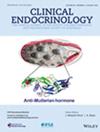The Use of Prednisolone 2.5 mg Daily During Ramadan Fasting in Patients With Adrenal Insufficiency
Abstract
Background
A previous study had established the safety and preserved of quality of life in patients with adrenal insufficiency (AI) who received prednisolone 5 mg once daily at sahur (predawn) during Ramadan fasting. It has been postulated that a lower dose of prednisolone between 2 and 3 mg may be sufficient for glucocorticoid replacement in this group of patients. This study aimed to assess the safety and effect on quality of life in patients with AI given prednisolone 2.5 mg during Ramadan fasting.
Methods
Patients with AI on twice-daily hydrocortisone, who had low or moderate risk of adrenal crisis and intended to fast, were recruited. Patients were given prednisolone 2.5 mg once daily taken at sahur(predawn) and Ramadan education was given. Weight, sleep duration, physical activity, biochemical parameters and quality of life measurements (SF-36 questionnaire) were analysed at the end of Ramadan and compared against the patient's own baseline readings before the start of Ramadan.
Results
A total of 16 patients (10 men, median age 60 [50.3, 68] years) were recruited. All patients were on 15–20 mg of hydrocortisone (in divided doses) before Ramadan, and intended to fast. Five of the participants had type 2 diabetes with low IDF-DAR risk category. 18.7% of the participants were unable to complete all 29 days of fasting. Up to 62.5% of the participants reported at least one adverse event. There was a statistically significant reduction in weight (median: −1.6 [−2.5, −0.3] kg, p < .01), systolic blood pressure (median: −17.0 (−28.8, −4.3) mmHg, p < .01) and diastolic blood pressure (median: −13.0 (−17.8, −3.8) mmHg, p < .01). Quality of life measures were preserved in all domains.
Conclusion
With prednisolone 2.5 mg daily in Ramadan fasting, more than half of the participants experienced symptoms of AI, with significant reduction in weight and blood pressure. We conclude that prednisolone 2.5 mg daily is insufficient during the somewhat stressful state of Ramadan fasting. Further studies with prednisolone 3–4 mg daily in settings with readily available prednisolone 1 mg tablets may further elucidate the safety of using lower dose prednisolone in Muslim patients who fast with AI during Ramadan.

 求助内容:
求助内容: 应助结果提醒方式:
应助结果提醒方式:


